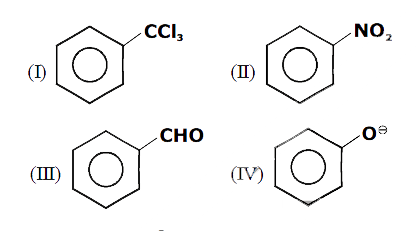Electrophile NO⊕2 attacks the following in which cases NO⊕2 will be at meta position:
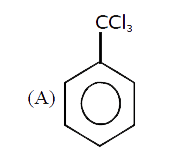
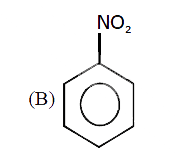
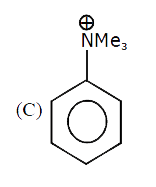
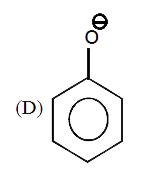
The correct Answer is:A, B, C
To determine the positions where the nitronium ion (NO2+) will attack a benzene ring, we need to analyze the substituents (X groups) present on the ring and their effects on the electron density. The key is to identify whether these substituents are electron-donating or electron-withdrawing.
1. Identify the Nature of Substituents:
- Determine if the substituent (X) on the benzene ring is an electron-donating group (EDG) or an electron-withdrawing group (EWG).
- EDGs increase electron density on the ring, favoring electrophilic attack at the ortho and para positions.
- EWGs decrease electron density on the ring, favoring electrophilic attack at the meta position.
2. Analyze the Effects of EDGs:
- If the substituent is an EDG (like -OH, -OCH3, -NH2), the electron density at the ortho and para positions increases, making them more reactive towards electrophiles. Therefore, the nitronium ion will not attack at the meta position.
3. Analyze the Effects of EWGs:
- If the substituent is an EWG (like -NO2, -CN, -COOH, -CF3), it pulls electron density away from the ring. This results in a decrease in electron density at the ortho and para positions, making the meta position relatively more electron-rich and favorable for attack by the nitronium ion.
4. Conclusion:
- The nitronium ion will attack the meta position in the presence of electron-withdrawing groups. Therefore, for the given question, we need to find the options where the substituents are EWGs.
Final Answer:
The nitronium ion (NO2+) will attack the meta position in the presence of electron-withdrawing groups. Thus, options with EWGs will lead to meta substitution.
- Determine if the substituent (X) on the benzene ring is an electron-donating group (EDG) or an electron-withdrawing group (EWG).
- EDGs increase electron density on the ring, favoring electrophilic attack at the ortho and para positions.
- EWGs decrease electron density on the ring, favoring electrophilic attack at the meta position.
- If the substituent is an EDG (like -OH, -OCH3, -NH2), the electron density at the ortho and para positions increases, making them more reactive towards electrophiles. Therefore, the nitronium ion will not attack at the meta position.
- If the substituent is an EWG (like -NO2, -CN, -COOH, -CF3), it pulls electron density away from the ring. This results in a decrease in electron density at the ortho and para positions, making the meta position relatively more electron-rich and favorable for attack by the nitronium ion.
- The nitronium ion will attack the meta position in the presence of electron-withdrawing groups. Therefore, for the given question, we need to find the options where the substituents are EWGs.
The nitronium ion (NO2+) will attack the meta position in the presence of electron-withdrawing groups. Thus, options with EWGs will lead to meta substitution.
Topper's Solved these Questions
- AROMATIC COMPOUNDBook:MOTIONChapter:AROMATIC COMPOUNDExercise:Exercise - 3
Explore 17 Videos
- AROMATIC COMPOUNDBook:MOTIONChapter:AROMATIC COMPOUNDExercise:Exercise - 4 | Level-I
Explore 13 Videos
- AROMATIC COMPOUNDBook:MOTIONChapter:AROMATIC COMPOUNDExercise:Exercise - 2 (Level-I)
Explore 47 Videos
- ALKYI HALIDEBook:MOTIONChapter:ALKYI HALIDEExercise:Exercise - 4 | Level-II
Explore 8 Videos
- ATOMIC STRUCTURE Book:MOTIONChapter:ATOMIC STRUCTURE Exercise:EXERCISE-4 (LEVEL-II)
Explore 18 Videos
Similar Questions
Knowledge Check
In which cases NO⊕2 will attack meta position
A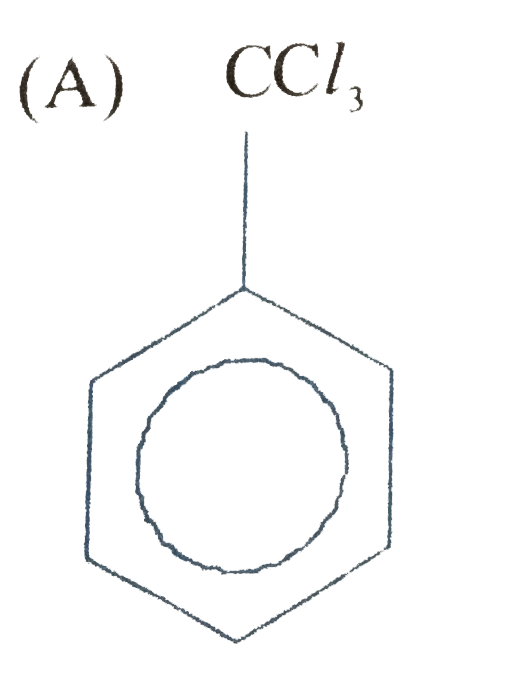 B
B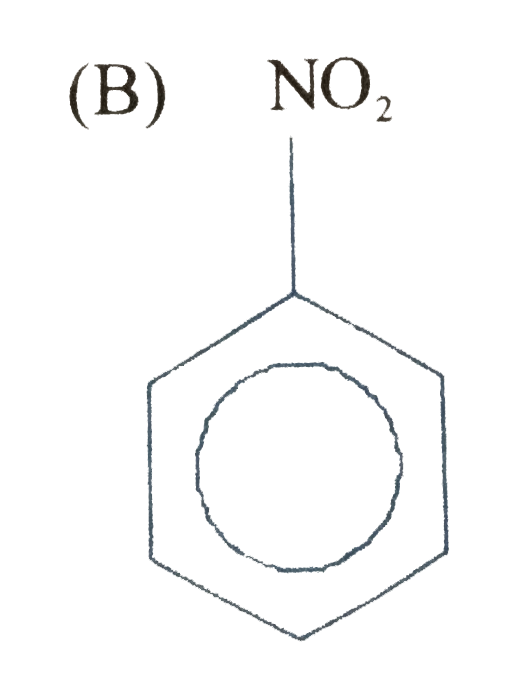 C
C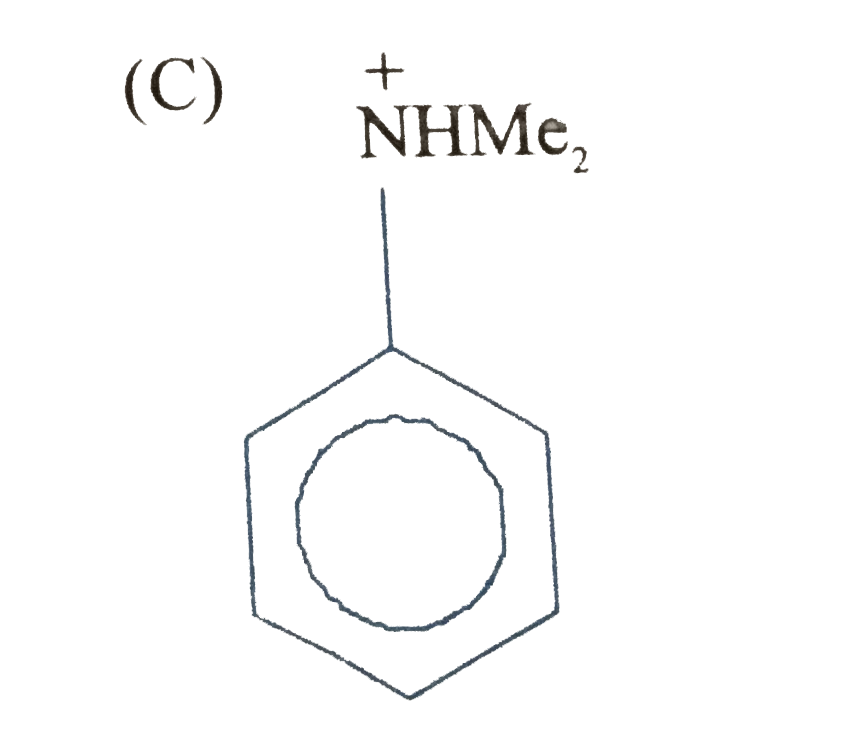 D
D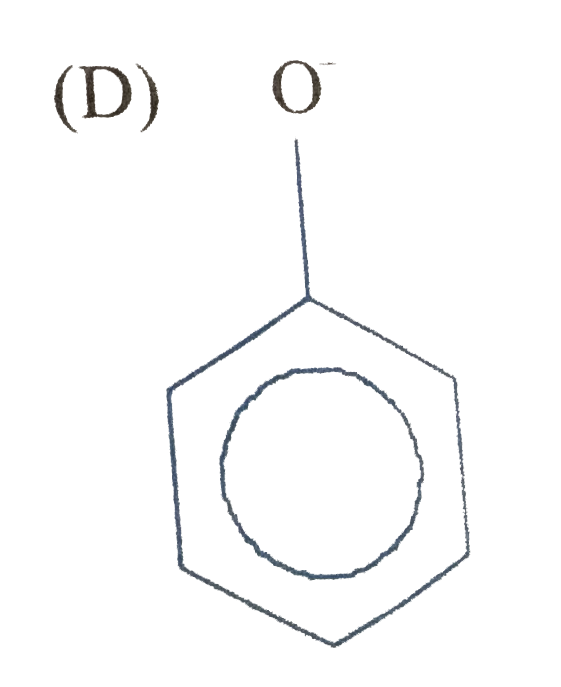
Electrophile ⊕NO2 attacks the following :
_E01_190_Q01.png)
In which cases ⊕NO2 will attack at meta positionAII and IVBI,II and IIICII and IVDI onlyIf the formation of NO and O2 from NO2, the rate of production of
ANO and O2 are equalBNO is double the rate of consumption of NO2CNO is twice the rate of production of O2DO2 is twice the rate of production of NO
Balance the following equation :
Pb(NO3)2→PbO+NO2+O2
View SolutionWhat are the major products when NOo2 (nitronium) reacts with
_E01_273_Q01.png)
View SolutionThe general electrophilic substitution reaction (replacement of H. by an electrophilic which is an electron deficient species) in aromatic ring is represented as followed.

An electrophilic attacks on ortho and para positions which respect to a stronger +m group are present in benzene ring and the electrophilie attacks at meta position with respect to stronger -m group if two -m groups are present in benzene ring.
What will be the product when electrophile Br⊕ attacks on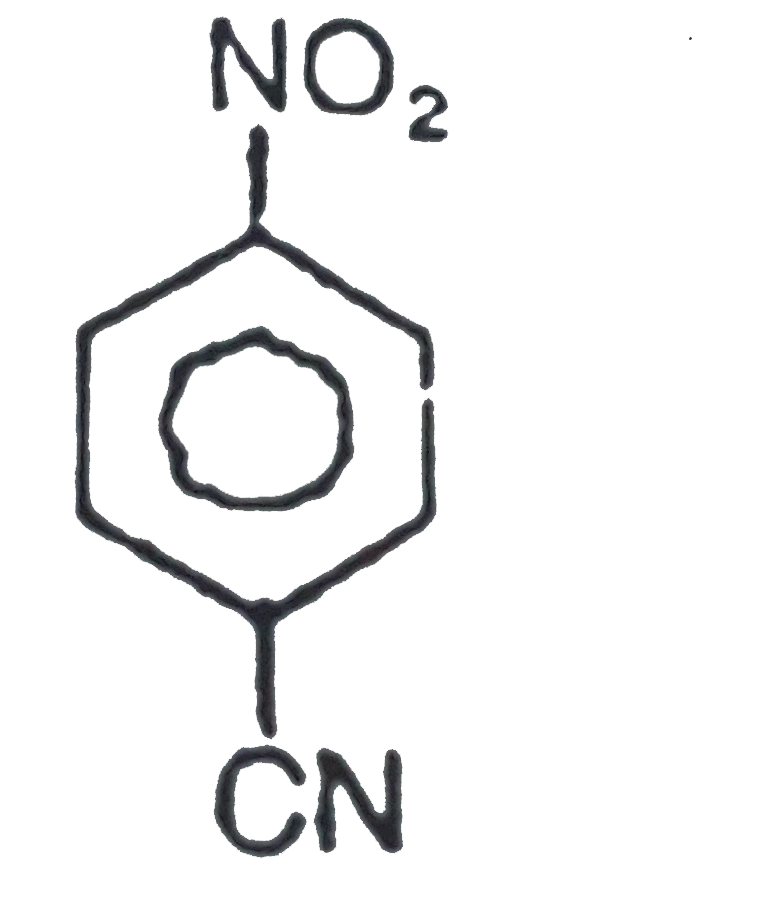
View SolutionThe general electrophilic substitution reaction (replacement of H. by an electrophilic which is an electron deficient species) in aromatic ring is represented as followed.

An electrophilic attacks on ortho and para positions which respect to a stronger +m group are present in benzene ring and the electrophilie attacks at meta position with respect to stronger -m group if two -m groups are present in benzene ring.
If electrophilic Br⊕ attacks on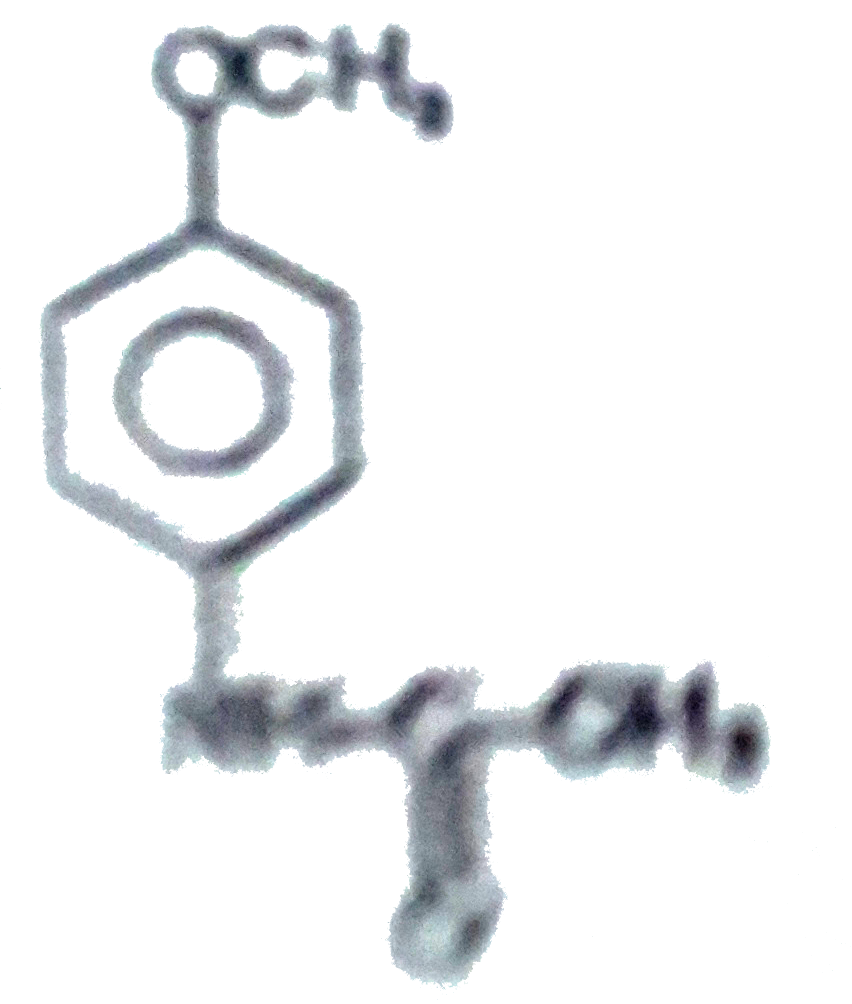 the product will be :
the product will be :
View SolutionConsider the reaction NO+12O2⇔NO2. Which of the following gives the value of Kc for this equilibrium ?
View Solution



